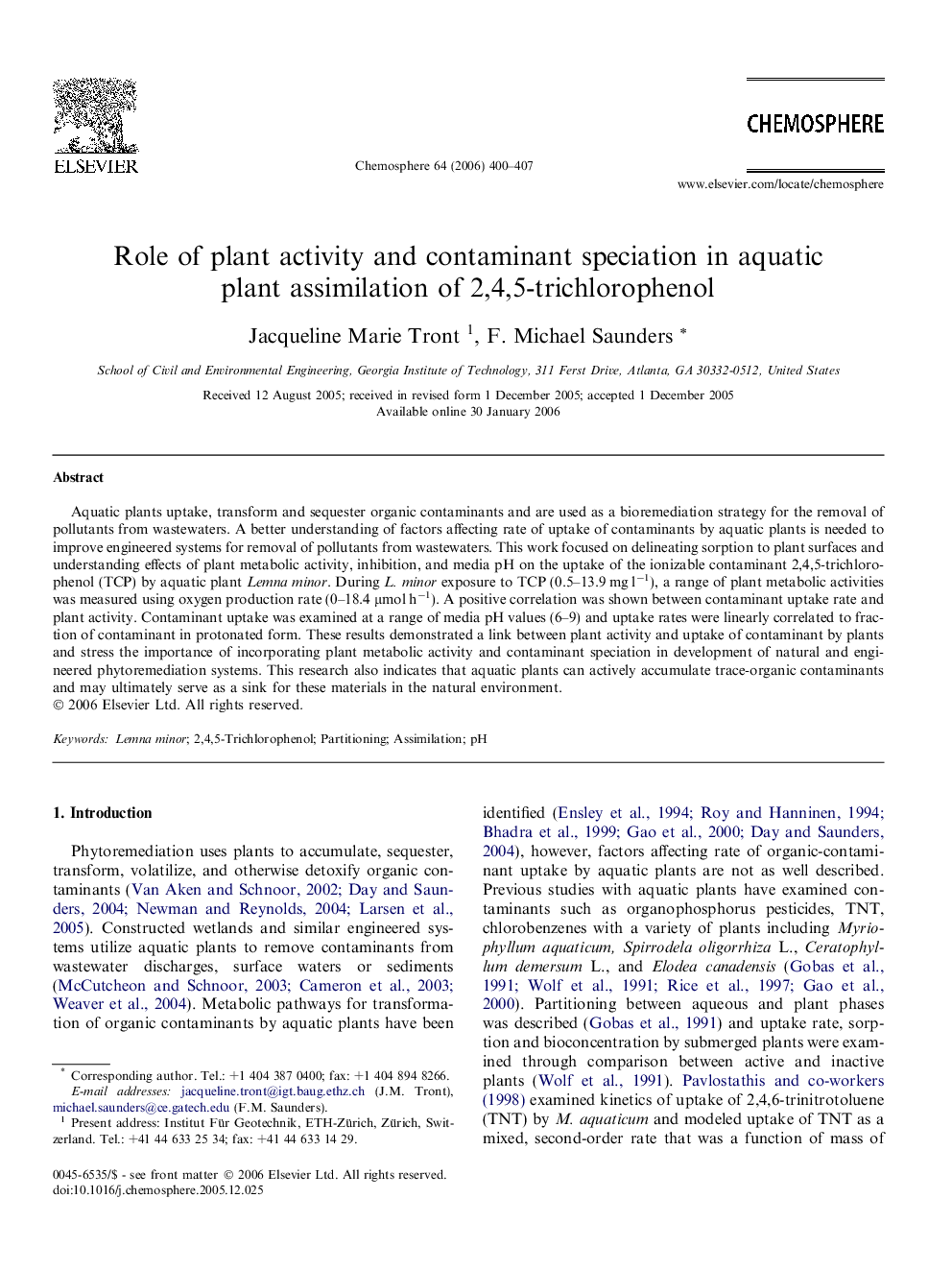| کد مقاله | کد نشریه | سال انتشار | مقاله انگلیسی | نسخه تمام متن |
|---|---|---|---|---|
| 4416356 | 1307778 | 2006 | 8 صفحه PDF | دانلود رایگان |

Aquatic plants uptake, transform and sequester organic contaminants and are used as a bioremediation strategy for the removal of pollutants from wastewaters. A better understanding of factors affecting rate of uptake of contaminants by aquatic plants is needed to improve engineered systems for removal of pollutants from wastewaters. This work focused on delineating sorption to plant surfaces and understanding effects of plant metabolic activity, inhibition, and media pH on the uptake of the ionizable contaminant 2,4,5-trichlorophenol (TCP) by aquatic plant Lemna minor. During L. minor exposure to TCP (0.5–13.9 mg l−1), a range of plant metabolic activities was measured using oxygen production rate (0–18.4 μmol h−1). A positive correlation was shown between contaminant uptake rate and plant activity. Contaminant uptake was examined at a range of media pH values (6–9) and uptake rates were linearly correlated to fraction of contaminant in protonated form. These results demonstrated a link between plant activity and uptake of contaminant by plants and stress the importance of incorporating plant metabolic activity and contaminant speciation in development of natural and engineered phytoremediation systems. This research also indicates that aquatic plants can actively accumulate trace-organic contaminants and may ultimately serve as a sink for these materials in the natural environment.
Journal: Chemosphere - Volume 64, Issue 3, June 2006, Pages 400–407